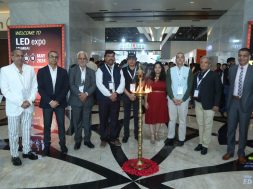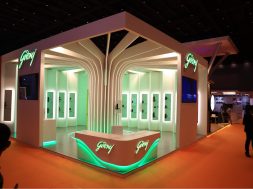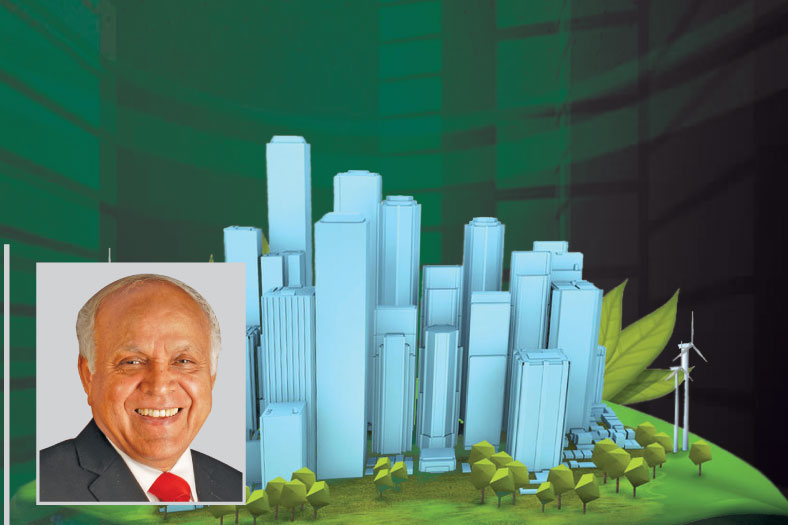Designing evolution with creativity
“Our evolution as a design studio has happened with big creative ideas and that hopefully will remain the essence of our way,” remarks Architect Kalhan Mattoo
Planet 3 Studios, founded by Kalhan Mattoo and Santha Gour Mattoo, has evolved as a multidisciplinary practice with a rapidly growing eclectic portfolio of projects. The essence of their design principle is to address the fundamentals through intense programming. In an exclusive interview with ACE Update, Ar. Kalhan Mattoo shares his architectural journey and vision
Journey in architectureArchitect Kalhan Mattoo and Santha Gour Mattoo had an opportunity to independently work on a 40-acre residential project while interning before graduation. The experience of working with a team and taking responsibility for delivering a full set of presentation material was an invaluable experience to kick-start their career aspirations. The very next assignment couldn’t have been more different. RPG Group gave them a challenge to design and build a 600-sq.-foot office in 20 days to accommodate 42 people. The budget was a measly 1.5 lakh and this was an impossible challenge on all possible levels. They delivered in 18 days and with a profit worth a smile. This taught them to question notions, to learn from constructors, to get hands dirty, and to take singular responsibility for outcome. From night clubs to places of worship, hotels to hospitals, landscape to facades, master plans to product design, cities to small bus stops, they have approached the all with a beginners mind and offered ideas that become agents of positive change. Never bogged down by dictates of style or ideology, they have freely explored within the opportunities presented. They are asked often what they ‘specialise’ in, and their response remains ‘nothing’ in particular. Domain expertise in a specific typology is not what they seek; they are more interested in learning from varied base of experiences and applying that outside perspective to solve particular design challenges. Their evolution as a design studio has happened with big creative ideas and that hopefully will remain the essence of their way.
Challenges facedIdeas that challenge entrenched notions invariably face headwinds when pushed forward. Beyond that, the very nature of architecture profession that makes design dependant on external patronage naturally introduces an element of risk in the dynamic. Architect Kalhan and Santha Gour Mattoo have had their share of disappointments with good projects stalled, shelved or killed for reasons beyond their control. The current scale of compensation in their industry leaves a lot desired, and they struggle to resource their project teams to the extent required. Quality of available projects is another challenge. Some of the best projects in the country go to foreign practices or established local firms and very little opportunity to younger architects to showcase talent. We lack the culture of competitive design bidding that does not discriminate against newer practices. There is precious little the government is doing as prime patron of arts, and the few opportunities are pushed out of reach with stringent pre-qualification requirements designed to maintain status quo. Beyond this, regressive and design unfriendly regulations, low level of awareness of design and art, meagre construction budgets, skill deficit in construction industry, and poor project planning and management challenge them on regular basis.
AchievementsArchitect Kalhan Mattoo and Santha Gour Mattoo have always celebrated any success, especially if it’s something that they have done differently in a fundamental way. Their very first architectural project was a college that was designed on a radically different programme and on principles that challenged prevalent thinking. Its success and recognition encouraged them to stay the path. Similarly, their first product design, a workstation that could be shut, stacked and moved about received acclaim for innovation and an international design award. The first resort they designed made it to popular lists of top upcoming resorts worldwide for its dramatic form as well as in its success in combining the best of dispersed format and monolithic hotel typologies. Currently, they are enthused about a 60-acre community master plan that they are on-site with and the mandate extends up to interior design of individual units as well. At the heart of the development, there is a 1-km green walk that runs through orchards, organic farms and other communal landscape spaces. They hope to have similar acceptance for the idea that communities can be held together by shared activities and fortunately the developer shares that view.
Future outlookThese are exciting times to be in! Planet 3 Studios is exploring parametric and computational design tools that fundamentally change the manner in which Mattoo duo create design. They literally created the design of a whole campus in a North Indian town using scripts that define usage parameters instead of drawing out the design intent. They have just completed the construction of an auditorium in central Mumbai that was designed by simulating the sound waves emerging from stage and modelling the space to respond to that key parameter. This kind of methodology offers the opportunity to check and vet key performance criteria and allow them to do a more informed design based in intelligence rather than aesthetic whim.
They are working across the country on projects that range from concepts for new cities, master plans and right down to design of individual buildings and even interiors. It may seem like a lot on plate for a mid-sized studio, but they are fully involved in what they take on. The quality of their team and engagement makes it possible to maintain a high degree of design integrity. They are looking forward to bigger and worse challenges still.
Five worst architectural designs in IndiaPlanet 3 Studios would desist from judging others work but the worst would be the ones that have zero design ambition and not necessarily ones that tried something and failed. The government is a big patron of generic architecture, and one only needs to look around to see what could easily have been done better.
11
Cookie Consent
We use cookies to personalize your experience. By continuing to visit this website you agree to our Terms & Conditions, Privacy Policy and Cookie Policy.







